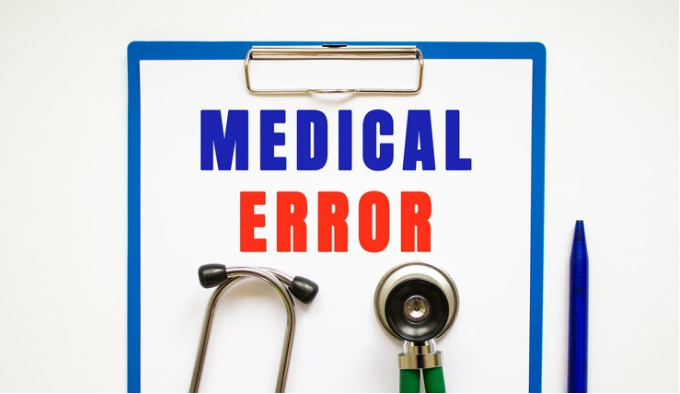How many Americans have Lewy body dementia (Recent Data)

Lewy body dementia, a neurological disorder, is characterized by the presence of abnormal alpha-synuclein (α-syn) protein deposits, referred to as Lewy bodies, within the brain.
These Lewy bodies disrupt the normal chemical processes in the brain, ultimately resulting in cognitive, motor, behavioral, and mood disturbances. It has been identified as a prevalent contributor to clinical dementia.
Approximately 1.4 million individuals in the United States are afflicted with Lewy Body Dementia (LBD), a condition characterized by a progressive decline in cognitive function coupled with an assortment of symptoms, including intermittent cognitive fluctuations, visual hallucinations, mood disturbances, and autonomic dysfunction.
Table of Contents
- Lewy body dementia Statistics In America - (Editor’s Choice)
- LBD Clinical Features Statistics In America
- What is Lewy body dementia, and How Does it Affect Individuals?
- How Common is Lewy body dementia Amongst Americans?
- What Factors Influence Lewy body dementia Statistics in the U.S.?
- Why is Early Detection and Intervention is Critical for Lewy body dementia?
- Challenges in Understanding and Addressing Lewy body dementia: What's Next?
- Final Thoughts
Lewy body dementia Statistics In America - (Editor’s Choice)
To describe the trends in epidemiology, healthcare resource use, and costs associated with Lewy body dementia (LBD) Here are some top picked statistics on LBD according to researches in 2023.
- Lewy Body Dementia (LBD) affects approximately 1.4 million individuals in the United States.
- Dementia with Lewy Bodies (DLB) accounts for 3.8% of new dementia diagnoses and represents 4.2% of dementia cases in community settings and 7.5% in secondary care.
- Age is a significant risk factor for DLB, typically manifesting between 70 and 85 years of age, accounting for around 5% of dementia cases in individuals over 75 years old.
- DLB is more common in men than in women, with approximately 70% of DLB diagnoses and 49% of Parkinson's Disease Dementia (PDD) diagnoses occurring in men.
- DLB tends to occur about five years earlier than PDD based on recent epidemiological findings.
- The incidence rates for PDD range from 0.43 to 1.13 per 100,000 person-years.
- In individuals with Parkinson's disease, the point prevalence of Parkinson's Disease Dementia is estimated to be between 25% and 30%.
- Over time, the prevalence of PDD increases to 83% in individuals with Parkinson's disease who live for 20 years post-diagnosis, with many showing signs of dementia before death.
- Advanced age, hallucinations, and fluctuating dementia at onset are indicators of poorer outcomes in both DLB and PDD.
- Between 2010 and 2016, among Medicare beneficiaries, the incidence rates of Lewy Body Dementia (LBD) ranged from 0.18% to 0.21%, while prevalence rates ranged from 0.83% to 0.90%.
- Out of 9,019 Medicare patients meeting, 53.2% were diagnosed with Dementia with Lewy Bodies (DLB), and 46.8% had Parkinson's Disease Dementia (PDD).
- In clinic-based research, dementia with Lewy bodies accounts for 4–8% of dementia patients
- A study conducted by Hely MA, Reid WG et al. found that dementia is prevalent in about 80% of people with Parkinson's disease.
- The average age of these patients was 78 years, and their mean Charlson Comorbidity Index score was 1.6.
- Prior to receiving an LBD diagnosis, patients incurred an average of $18,309 in medical costs during the year leading up to diagnosis.
- In the first and fifth years post-diagnosis, patients experienced average medical costs of $29,174 and $22,814, respectively.
- The primary cost contributors were inpatient and outpatient visits.
- Similar patterns were observed in both DLB and PDD patients, as well as among commercially-insured individuals.
Sources : Pubmed, Wiley ScienceDirect
Related: What percentage of Individuals have Psoriasis
LBD Clinical Features Statistics In America
Dementia is characterized by a gradual decline in cognitive abilities, significant enough to disrupt normal social, occupational, or daily functioning. In the context of Dementia with Lewy Bodies (DLB), the presence of dementia is a crucial diagnostic criterion.
DLB shares some clinical features with other dementia-related conditions, notably Alzheimer's disease (AD). However, it is essential to note the importance of distinguishing between the specific cognitive impairments that are more prevalent in different types of dementia.
As per a study led by Auning E et al., which aimed to distinguish the initial complaints in Dementia with Lewy Bodies (DLB) and Alzheimer's Disease (AD), it was found that the primary concern expressed by DLB patients most frequently.
- In DLB patients, the most frequently reported complaint was memory dysfunction, with a prevalence of 57%.
- Other common complaints among DLB patients included visual hallucinations (44%), depression (34%), problem-solving difficulties (33%), gait disturbances (28%), and tremor and stiffness (25%).
- In contrast, participants in the AD group overwhelmingly reported memory dysfunction (99%) as the primary symptom, followed by problem-solving difficulties (28%) and depression (24%).
- This study established that while memory impairment is a significant symptom in DLB, it is not as prevalent as in AD.
Sources : Pubmed, Wiley ScienceDirect
What is Lewy body dementia, and How Does it Affect Individuals?
Lewy body dementia (LBD) is like a tricky brain glitch that messes with your thinking, movement, behavior, and mood. One of its sneakiest tricks is making you see things that ain't real, like visual hallucinations. And it's not shy about it, often showing up pretty early in the game.
How Common is Lewy body dementia Amongst Americans?
The DLB (Dementia with Lewy Bodies) stats are a bit of a mixed bag. It's not super common, with estimates ranging from 0% to 5% in the general population and 0% to 30.5% among all dementia cases.
Incidence rates, or how many new cases pop up, are even trickier to pin down. Some reports suggest it's as low as 0.1% in the general population and 3% for all new dementia cases.
Now, a recent review dug into 22 studies and found that incidence rates varied between 0.5 to 1.6 per 1,000 person years, making up about 3% to 7% of dementia cases. And here's the kicker – prevalence, or how many people already have it, goes from 0.02 to 63.5 per 1,000, shooting up as folks get older.
So, DLB, it's kind of like a mysterious guest at the dementia party – not always invited, but it shows up from time to time.
Sources : Pubmed, Wiley ScienceDirect
What Factors Influence Lewy body dementia Statistics in the U.S.?
Alzheimer's disease stands as the most prevalent form of dementia, affecting a substantial number of individuals in the United States.
Currently, estimates indicate that approximately 5.8 million people are living with Alzheimer's and related dementias, with the majority being aged 65 and older.
There's also a noteworthy subset of about 200,000 individuals under the age of 65 who have what's known as younger-onset Alzheimer's.
Projections into the future paint a concerning picture. By the year 2060, it is anticipated that the number of Alzheimer's cases will soar to around 14 million people. This escalation in cases will disproportionately impact minority populations.
For instance, cases among Hispanics are expected to surge sevenfold compared to current estimates, while cases among African Americans are projected to quadruple.
A combination of factors, including a higher prevalence of health conditions like heart disease and diabetes in these communities, as well as socio-economic factors such as lower levels of education, greater poverty rates, and increased exposure to adversity and discrimination, contribute to this disparity in Alzheimer's risk.
Additionally, it's crucial to recognize that Alzheimer's disease doesn't discriminate based on race alone. Across all racial backgrounds, women face nearly twice the risk of being affected by Alzheimer's compared to men. This gender difference is primarily attributed to women typically having longer lifespans.
Understanding and addressing these disparities in Alzheimer's and related dementias is paramount. It represents the first step towards developing effective prevention strategies and directing vital services to those who are most vulnerable to developing this debilitating disease.
Sources : Pubmed, Wiley ScienceDirect
Why is Early Detection and Intervention is Critical for Lewy body dementia?
Obtaining a timely diagnosis of dementia can be challenging for some individuals, primarily due to certain barriers, such as the misconception that memory problems are an inevitable part of aging, the fear of social stigma associated with dementia, the absence of a cure, and apprehension about what the future may hold.
However, it's crucial to emphasize the significance of early diagnosis, as it offers several essential benefits.
Early diagnosis of dementia serves as the initial step in formulating effective management strategies to enhance the quality of life for affected individuals.
Moreover, as medical advancements continue to progress, there is the promise of more efficient treatments in the future, further underscoring the importance of early diagnosis.
By seeking a diagnosis and increasing awareness about dementia, individuals and healthcare providers can better address the challenges posed by this condition and work towards a brighter future for those affected.
Early diagnosis of dementia brings numerous benefits, including:
- Planning and Assistance: It enables individuals and their families to understand and adapt to the diagnosis. This includes making legal and financial arrangements, exploring living options, and discovering supportive services that enhance the quality of life. It also empowers individuals to actively participate in decision-making and future planning.
- Addressing Concerns: Early diagnosis is crucial in addressing concerns related to memory and cognitive changes. It allows for the prompt identification of underlying causes, some of which may be treatable or reversible, such as infections, depression, medication side effects, or nutritional deficiencies. Identifying the cause brings relief to individuals and their families.
3. Treatment: Evidence suggests that medications for Alzheimer's disease are more effective when administered early. While these medications cannot cure dementia, they can help maintain daily function, stabilize cognitive decline in some cases, and enhance the quality of life. Early diagnosis ensures timely access to these treatments.
- Health Management: Early diagnosis aids in managing accompanying symptoms like depression or irritability. It also facilitates the review of other medical conditions, as memory problems may affect a person's ability to remember essential medications for conditions such as diabetes, heart disease, or high blood pressure.
In essence, early diagnosis plays a pivotal role in enhancing the well-being and future planning of individuals with dementia and their families while allowing for timely interventions and treatment.
Challenges in Understanding and Addressing Lewy body dementia: What's Next?
Lewy Body Dementia (LBD) presents a complex set of challenges for both patients and healthcare professionals. This progressive neurodegenerative disorder shares symptoms with other dementias, making diagnosis difficult. Furthermore, there are limited treatment options available. To address these challenges, ongoing research is crucial.
- Early Diagnosis:
- One significant challenge is the early diagnosis of LBD. Symptoms like cognitive fluctuations, visual hallucinations, and motor issues can overlap with other dementias, such as Alzheimer's disease.
- What's Next: Improved diagnostic tools, including advanced imaging techniques and biomarkers, are being developed to enhance early detection accuracy.
- Differentiating LBD Subtypes:
- LBD encompasses two main subtypes: Dementia with Lewy Bodies (DLB) and Parkinson's Disease Dementia (PDD). Accurate differentiation is vital for treatment planning.
- What's Next: Researchers are working on refining criteria and diagnostic methods to distinguish between these subtypes.
- Limited Treatment Options:
- There is no cure for LBD, and available treatments focus on symptom management rather than addressing the underlying causes.
- What's Next: Ongoing clinical trials are exploring new medications and interventions aimed at slowing down disease progression.
- Understanding Disease Mechanisms:
- The exact causes of LBD remain unclear, hindering the development of targeted therapies.
- What's Next: Research is ongoing to unravel the genetic and molecular factors contributing to LBD, which may lead to more effective treatments.
- Addressing Caregiver Needs:
- Caring for individuals with LBD can be physically and emotionally demanding for caregivers, often requiring specialized knowledge and support.
- What's Next: Initiatives are emerging to provide resources, education, and respite care for caregivers to improve their ability to manage the challenges of LBD.
- Raising Awareness:
- Lack of awareness about LBD among the general public and healthcare professionals can lead to delayed diagnosis and inadequate support.
- What's Next: Advocacy efforts and public awareness campaigns aim to shed light on LBD and the importance of early diagnosis.
Final Thoughts
So, there you have it – While Lewy Body Dementia presents substantial challenges, ongoing research offers hope for better understanding, earlier diagnosis, and improved treatments. Raising awareness and providing support for both patients and caregivers are crucial steps in addressing the complexities of LBD in the future.
For more related content, take a look at



